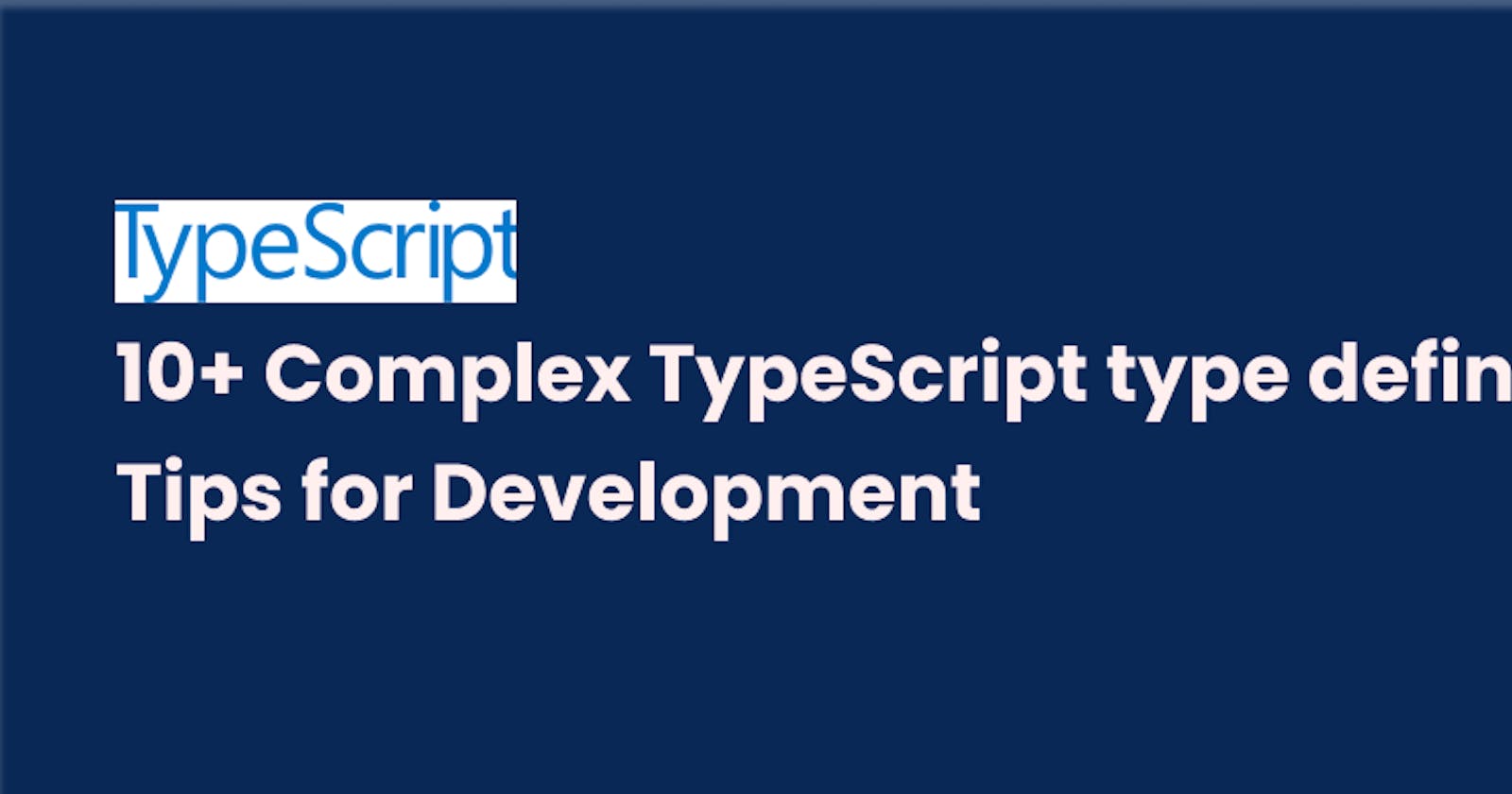let's take a look at how you can build complex types in TypeScript using examples of JSON-like structures.
1.Plain object
const fullName: { firstName: string; lastName: string } = {
firstName: 'Lakshmanan',
lastName: 'Arumugam'
};
console.log(fullName.firstName)
// Output Lakshmanan
2.Numeric Enum Variable Assignment
enum Weekend {
Friday = 5,
Saturday,
Sunday
};
// Assign a valid value of Weekend
const today: Weekend = 7; // No bug
console.log(`Today is the ${today}th day of the week!`);
// Output: "Today is the 7th day of the week!"
3.Array Type Inference on Tuple
const threeWords: [ string, number, string] = ['Won', 5, 'games'];
// Calling .concat() on a tuple returns an array
let moreWords = threeWords.concat(['last', 'night']);
// An array is expandable
moreWords[5] = ('!');
console.log(moreWords);
// Output: ["Won", 5, "games", "last", "night", "!"]
4.Array of basic type
const marks: number[] = [ 100, 500, 300, 200, 400 ]
console.log("mark value", marks[0])
// Output: 100
5.Array Generic type
// zipcodes is an array of strings
let zipcodes: Array<string> = ['03255', '02134', '08002', '03063'];
// Pushing a number to zipcodes will generate an error
// Error: Argument of type 'number' is not assignable to parameter of type 'string'.
zipcodes.push(05115);
6.Object key string and value
interface StatusObject {
id: number;
name: string;
}
interface Status {
[key: string]: StatusObject
}
const statusValues: Status = {
"0": { "id": 0, "name": "Available" },
"1": { "id": 1, "name": "Ready" },
"2": { "id": 2, "name": "Started" }
};
console.log(statusValues["0"].name)
// Output: "Available"
7.Array of object
interface Color {
color: string;
value: string;
}
const colors:Color[] = [
{
color: "red",
value: "#f00"
},
{
color: "green",
value: "#0f0"
}
]
console.log(colors[0].color)
// Output: "red"
8.Highly nested object and array values
interface Bakery {
id: string;
type: string;
name: string;
ppu: number;
batters: Batters;
topping: Topping[];
}
interface Batters {
batter: Topping[];
}
interface Topping {
id: string;
type: string;
}
const bakery: Bakery = {
"id": "0001",
"type": "donut",
"name": "Cake",
"ppu": 0.55,
"batters": {
"batter": [
{
"id": "1001",
"type": "Regular"
}
]
},
"topping": [
{
"id": "5001",
"type": "None"
}
]
}
console.log(bakery.batters.batter[0].id)
// Output: "1001"
9.Object value required field(Utility)
interface Car {
make: string;
model: string;
mileage?: number;
}
let FordCard: Required<Car> = {
make: 'Ford',
model: 'Focus',
mileage: 12000 // `Required` forces mileage to be defined
};
let KiaCard: Required<Car> = {
make: 'Ford',
model: 'Focus'
};
//Error
//Property 'mileage' is missing in type '{ make: string; model: string; }' but required in type 'Required<Car>'.
10.Inheritance existing type defintion
interface Brand {
brand: string;
}
interface Model extends Brand {
model: string;
}
class Car implements Model {
brand;
model;
constructor(brand: string, model: string) {
this.brand = brand;
this.model = model;
}
log() {
console.log(`Drive a ${this.brand} ${this.model} today!`);
}
}
const myCar: Car = new Car('Nissan', 'Sentra');
myCar.log();
// Output: "Drive a Nissan Sentra today!"
11.Complex API response typing
// Define types for product and customer
type Product = {
id: number;
name: string;
price: number;
stock: number;
};
type Customer = {
id: number;
name: string;
email: string;
};
// Define types for order and order status
type OrderStatus = "pending" | "processing" | "shipped" | "delivered" | "cancelled";
type Order = {
id: number;
customer: Customer;
products: { product: Product; quantity: number }[];
status: OrderStatus;
};
// Define type for the inventory management system
type InventorySystem = {
products: Product[];
customers: Customer[];
orders: Order[];
addProduct: (product: Product) => void;
addCustomer: (customer: Customer) => void;
placeOrder: (order: Order) => void;
};
// Create an instance of the inventory management system
const inventory: InventorySystem = {
products: [],
customers: [],
orders: [],
addProduct(product) {
this.products.push(product);
},
addCustomer(customer) {
this.customers.push(customer);
},
placeOrder(order) {
// Check if products are in stock before placing the order
for (const { product, quantity } of order.products) {
const availableProduct = this.products.find(p => p.id === product.id);
if (!availableProduct || availableProduct.stock < quantity) {
throw new Error(`Product ${product.name} is out of stock.`);
}
}
// Deduct ordered quantities from the product stock
for (const { product, quantity } of order.products) {
const availableProduct = this.products.find(p => p.id === product.id);
if (availableProduct) {
availableProduct.stock -= quantity;
}
}
this.orders.push(order);
},
};
// Example usage
const newProduct: Product = { id: 1, name: "Widget", price: 10, stock: 100 };
inventory.addProduct(newProduct);
const newCustomer: Customer = { id: 1, name: "Alice", email: "alice@example.com" };
inventory.addCustomer(newCustomer);
const newOrder: Order = {
id: 1,
customer: newCustomer,
products: [{ product: newProduct, quantity: 3 }],
status: "pending",
};
inventory.placeOrder(newOrder);
console.log(inventory);
// Output:
// {
// "products": [
// {
// "id": 1,
// "name": "Widget",
// "price": 10,
// "stock": 97
// }
// ],
// "customers": [
// {
// "id": 1,
// "name": "Alice",
// "email": "alice@example.com"
// }
// ],
// "orders": [
// {
// "id": 1,
// "customer": {
// "id": 1,
// "name": "Alice",
// "email": "alice@example.com"
// },
// "products": [
// {
// "product": {
// "id": 1,
// "name": "Widget",
// "price": 10,
// "stock": 97
// },
// "quantity": 3
// }
// ],
// "status": "pending"
// }
// ]
// }
Conclusion:
This example demonstrates how TypeScript's advanced typing features can be used to ensure type safety and structure in a complex application scenario.
For more examples check out my blogs

Comments
Post a Comment